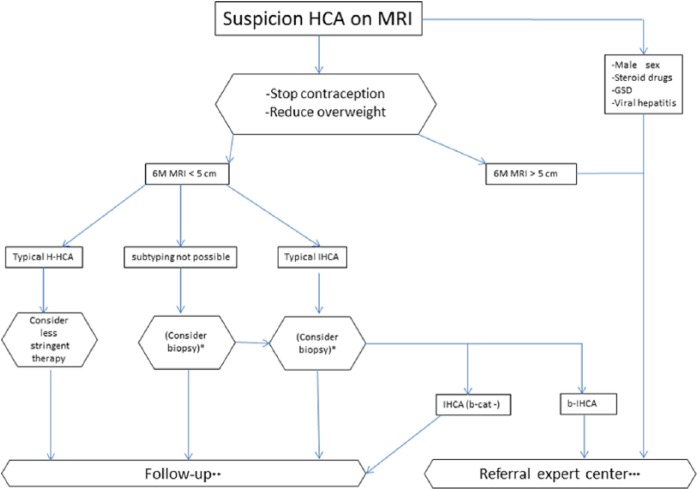Figure 5.
The management decision tree used in our tertiary academic medical center. This decision tree may not be appropriate for all patients; for some, a customized approach should be considered.
*One option is to biopsy those lesions where a subtyping diagnosis by imaging is impossible to achieve, or those lesions with typical signs of IHCA. Currently, this option is considered impractical given the large number of biopsies involved.
**Follow up is advised initially, at 6-monthly intervals. Thereafter, if the lesion shows no further alteration, follow up can be stopped, or repeated yearly until menopause. If the lesion is a typical H-HCA, follow up can be less stringent, possibly involving sonography, or MRI without contrast.
***Referral to an expert center is advised for the evaluation of any indication requiring intervention. This decision should be taken with consideration of contraindications (obesity, diabetes, centrally located tumor, ASA classification). Treatment can be primarily surgical, and in selected cases, RFA or local embolization.
b-HCA, β-catenin activated HCA; GSD, glycogen storage disease; HCA, hepatocellular adenoma; H-HCA, HNF1A-mutated HCA; IHCA, inflammatory HCA; M, months; RFA, radiofrequency ablation.

